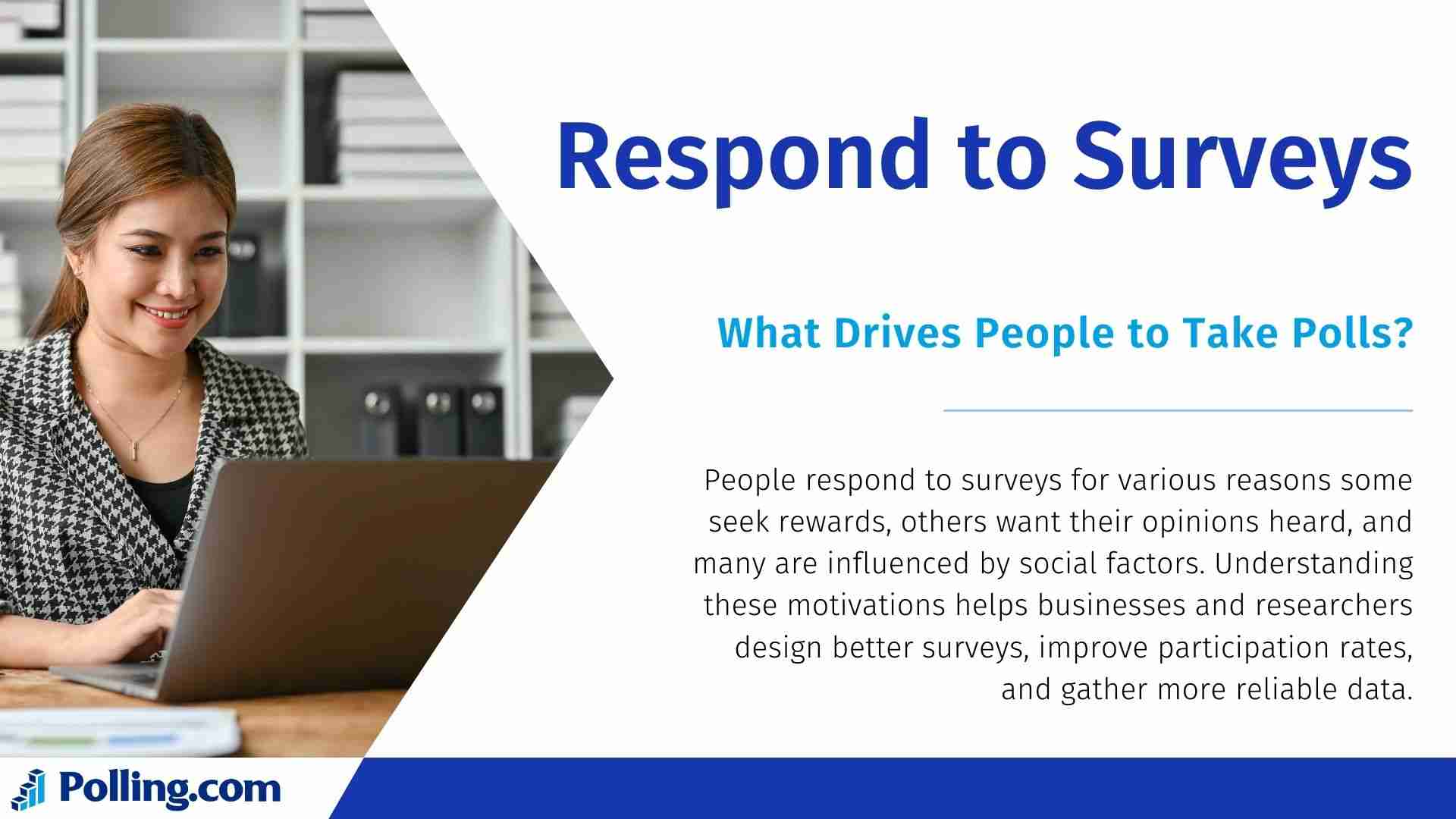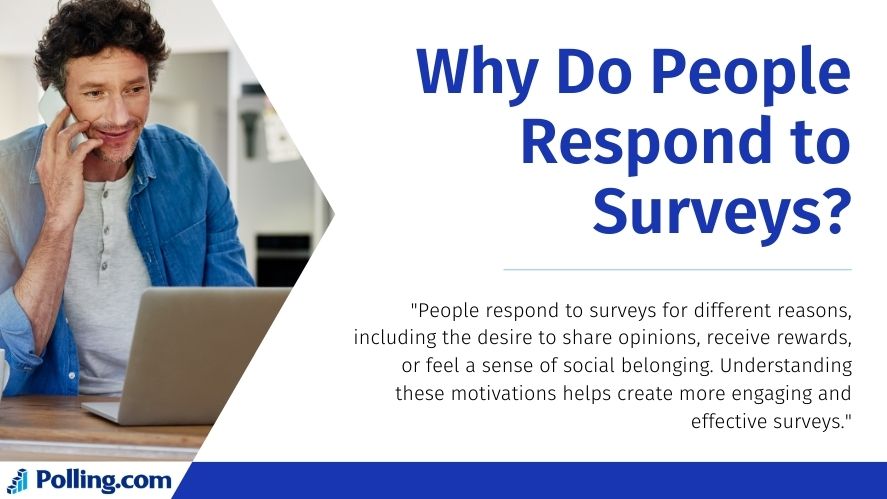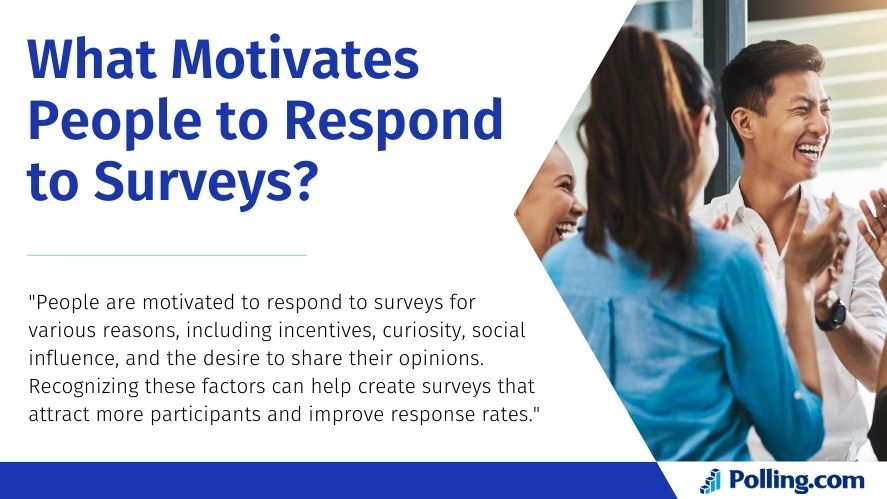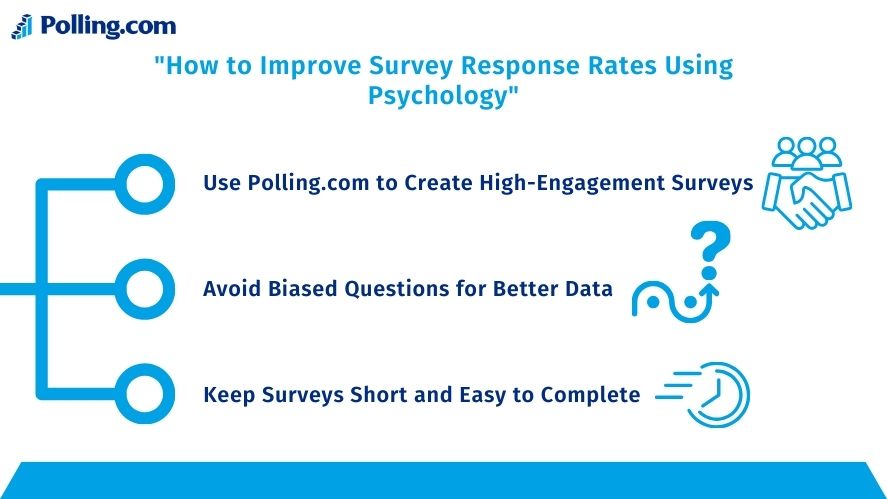
Respond to Surveys: What Drives People to Take Polls?
Surveys and polls help collect opinions, measure trends, and guide decision-making. Businesses, researchers, and organizations rely on them to gather valuable insights. But what motivates people to respond to surveys?
Understanding why people take surveys is crucial. Many factors, including psychology, incentives, and social influence, impact participation. If we know what drives people, we can design better surveys and increase response rates. In this article, we’ll explore the psychology behind survey participation and share tips to improve survey engagement.
Why Do People Respond to Surveys? The Psychology Behind It

How Human Psychology Affects Survey Participation
People don’t always take surveys based on logic alone. Instead, emotions, habits, and social norms also play a role. This concept, known as survey psychology, explains why some individuals eagerly complete surveys while others ignore them.
One major reason people participate is the need to share their opinions. They want to be heard and feel like their input matters. Another reason is curiosity some enjoy answering questions and seeing how their responses compare to others.
Social Desirability Bias: Why People Give “Good” Answers
Even when people take surveys, their answers may not always be honest. Social desirability bias happens when people give answers that make them look good instead of telling the truth.
For example, if a person taking a survey is asked about their eating habits, they may claim to eat more vegetables than they actually do. This bias can make survey results less reliable. To get more honest answers, surveys should use neutral wording and anonymous responses.
What Motivates People to Respond to Surveys?

a. Incentives and Rewards Make Surveys More Appealing
One of the biggest reasons people respond to surveys is to get something in return. Offering rewards makes people more likely to participate.
Common incentives include:
- Cash rewards – Direct payments or gift cards
- Discounts – Coupons for future purchases
- Sweepstakes – A chance to win a prize
Psychologists call this the reciprocity effect. When people receive something, they feel obligated to give something back like completing a survey.
b. People Want to Share Their Opinions
Many people respond to surveys because they enjoy expressing their thoughts. If a topic matters to them, they are more likely to participate.
Why people love sharing opinions:
- It makes them feel heard.
- They want to influence decisions.
- It helps companies or researchers improve.
Surveys that focus on popular topics, such as social issues or customer experiences, often receive higher response rates.
c. Social Influence: People Follow the Crowd
When others take a survey, we feel more encouraged to do the same. This is known as the bandwagon effect.
How social influence boosts survey responses:
- If friends share a survey on social media, more people participate.
- Seeing positive feedback about a survey increases trust.
- Peer pressure makes people more likely to take part.
Surveys promoted in online communities or by influencers often get higher participation.
d. Curiosity Keeps People Engaged
A well-designed survey sparks curiosity. If it looks interesting, people are more likely to take it.
Ways to increase engagement:
- Gamification – Adding points, levels, or rewards
- Interactive elements – Using images, sliders, or quick quizzes
- Personalization – Customizing questions to fit the respondent
A survey that feels like a fun quiz will get more responses than a dull, text-heavy form.
e. Trust and Credibility Increase Survey Responses
People respond to surveys more when they trust the source. If they believe their data is safe and the survey is important, they are more willing to participate.
Ways to build trust:
- Be clear about how responses will be used.
- Ensure privacy and data protection.
- Use a well-known brand or research organization.
Transparency makes a big difference. If people know their answers are confidential, they will be more honest.
How to Improve Survey Response Rates Using Psychology

a. Use Polling.com to Create High-Engagement Surveys
Using the right tools makes a big difference. Polling.com offers survey software for research, helping businesses design interactive and engaging surveys. A well-structured survey keeps people interested and increases completion rates.
b. Avoid Biased Questions for Better Data
To get accurate answers, surveys must be free from bias. Here are a few ways to achieve this:
- Avoid leading questions – Don’t push people toward a certain answer.
- Use balanced wording – Keep questions neutral.
- Test questions first – Check for bias before launching the survey.
For example, asking, “How much do you love our product?” assumes the person likes it. A better question would be, “How would you rate our product?”
Using unbiased questions examples ensures that responses are honest and reliable.
c. Personalize Surveys to Make Them More Relevant
People are more likely to respond to surveys if they feel the questions apply to them. Personalizing surveys based on customer behavior or demographics improves engagement.
Ways to personalize surveys:
- Ask about past experiences with a brand.
- Use the respondent’s name in the survey.
- Offer customized question paths based on answers.
d. Keep Surveys Short and Easy to Complete
Long surveys often discourage participation. People prefer surveys that take only a few minutes.
Tips to improve survey completion rates:
- Use clear and simple questions.
- Offer different survey options (multiple choice, sliders, etc.).
- Ensure the survey works well on mobile devices.
By keeping surveys short and user-friendly, response rates can improve significantly.
e. Analyze Open-Ended Responses for Better Insights
Not all survey questions should be multiple-choice. Open-ended questions help gather deeper insights. However, analyzing them can be challenging.
Using survey open-ended questions analysis visual tools can help organize and interpret responses. Charts and word clouds can make it easier to spot trends.
f. The Role of Negative Scoring in Surveys
Negative scoring can help detect dishonest answers. For example, if a person contradicts themselves in different questions, their response may not be reliable.
The effectiveness of negative scoring in survey example studies show that using this method improves data quality.
g. Be Aware of Bias in Question Wording
Understanding questions about bias helps survey creators design fairer questions. Negative questions sociology examples can highlight wording issues that may lead respondents toward a specific answer.
Conclusion
People respond to surveys for many reasons. Some are motivated by incentives, while others enjoy sharing opinions or feel influenced by social factors. Trust and credibility also play a big role.
To increase survey response rates, businesses should:
- Offer rewards or incentives.
- Use engaging and interactive survey formats.
- Keep surveys short and personalized.
- Avoid biased or misleading questions.
By applying these strategies, organizations can design surveys that attract more participants and provide more reliable data. If you want to create effective surveys, try Polling.com for research-backed tools that improve engagement and accuracy.
